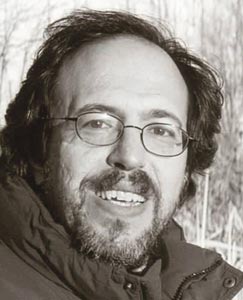Lee Smolin is a quantum-gravity researcher at the Perimeter Institute for Theoretical Physics in Waterloo, Canada. His own books include Life in the Cosmos and Three Roads to Quantum Gravity.

What are the three best popular science books?
Relativity: The Special and General Theory by Albert Einstein because it is readable by a child who knows no maths. If you read the book carefully and think about each page as you do so you really undergo an intellectual transformation and come out understanding relativity. I have used it in several courses for non-scientists and it works.
The Selfish Gene by Richard Dawkins introduced me to the real logic of natural selection, and makes an extremely strong case for it.
Microcosmos by Lynn Margulis floored me. It radically changed my way of thinking about biology and life, and led to new ideas in my own work.
All of these books make an important scientific and philosophical argument in language that laypeople can understand. However, they are also the real stuff – being written by scientists who are constructing a case for something they have understood and passionately believe in. These books show that science is indeed focused and disciplined common sense, and that any important scientific idea can be explained and argued for in careful, non-technical language.
What books are you currently reading?
I am reading Bright Galaxies, Dark Matter – a collection of essays by Vera Rubin, the American astronomer who discovered that the motions of stars in galaxies cannot be accounted for by Newton’s laws unless there is a lot of hidden, or dark, matter. Rubin is one of the great living scientists and there is no more influential or consequential discovery in the astronomy and physics of the last 40 years. Indeed, we still do not know what dark matter is – or even if it is dark matter rather than a breakdown in Newton’s law of gravity.
The fact that Rubin made this discovery as a young scientist – working alone or with a few students – teaches us that the individual judgement and initiative of a scientist, choosing her own direction, is still the most reliable way for science to progress. The story she tells also takes us back to the days when women were excluded from many areas of academic life. In 1965 she was the first woman permitted to observe at the Palomar observatory. We have come a long way since then, but the fact that Rubin is not a household name perhaps tells us that we have still a long way to go.
Which popular-science book have you never read, but feel you ought to have tackled?
I must confess I never made it more than a few pages into Stephen Hawking’s A Brief History of Time because I found the reasoning about things like quantum cosmology, imaginary time and so on as confusing and as sloppily argued in the book as in the original papers. If I can’t understand what it could mean to say that time “becomes imaginary” at “early times” – and I am a professional who works in the same field – how is the public supposed to understand what is meant?
I tried to read the book in the hope that Hawking used the opportunity to explain the idea without the technicalities, in a way that I could perhaps finally understand, but ended up feeling that there is possibly really nothing there. However, I have always felt guilty about not finishing the book, and wonder that if I persevered through the bad prose I might finally understand what he is proposing.



